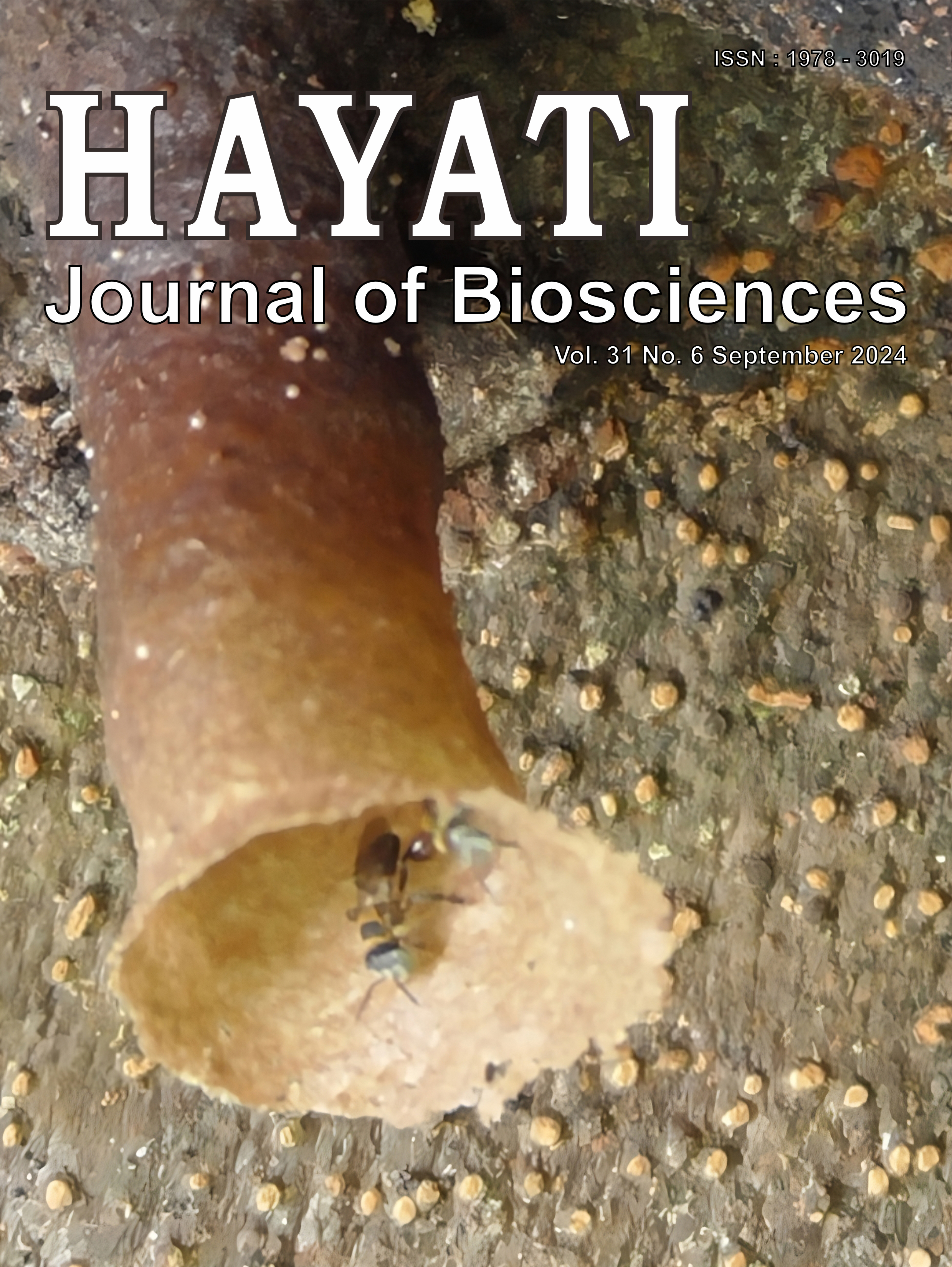3D Culture Cells Technique for Exosomes Isolation of HEK293 and its Application on WiDr Cells
Abstract
Three-dimensional (3D) culture is a technique commonly utilized in bioprocessing and biomedical research. Exosomes have been investigated as carriers for medications in numerous studies employing 3D culture methodologies. The objective of this research is to employ 3D cell culture for the isolation and treatment of exosomes targeting colon cancer cells. The isolation of exosomes obtained from HEK293 cells was conducted through the ultracentrifugation technique. Subsequently, exosome treatment was administered to WiDr cells at concentrations of 3.5 µg/ml, 7 µg/ml, and 14 µg/ml.The validation of molecular markers of exosomes (CD9 and CD81), along with BAX, BCL-2, and CD133, was performed using qRT-PCR. The findings revealed the successful isolation of exosomes derived from HEK293 cells, which exhibited the expression of markers CD9 and CD81. Furthermore, the expression of BAX and BCL-2 indicated the potential of exosomes to induce apoptosis, while the expression level of CD133 decreased with treatment at varying concentrations. These results suggest that exosome treatment has the capability to impede the proliferation of WiDr cells and reduce the expression of CD133, thereby signifying the potential application of exosomes as an in-vitro model for investigating cancer therapy in the future.
Downloads
Copyright (c) 2024 Mia Audina, Silmi Mariya, Bella Fatima Dora Zaelani, Yuliana, Huda Shalahudin Darusman

This work is licensed under a Creative Commons Attribution-NonCommercial 4.0 International License.
HAYATI J Biosci is an open access journal and the article's license is CC-BY-NC. This license lets others distribute, remix, tweak, and build upon author's work, as long as they credit the original creation. Authors retain copyright and grant the journal/publisher non exclusive publishing rights with the work simultaneously licensed under a https://creativecommons.org/

























.png) IPB University
IPB University Department of Biology
Department of Biology The Indonesian Biological Society
The Indonesian Biological Society 

